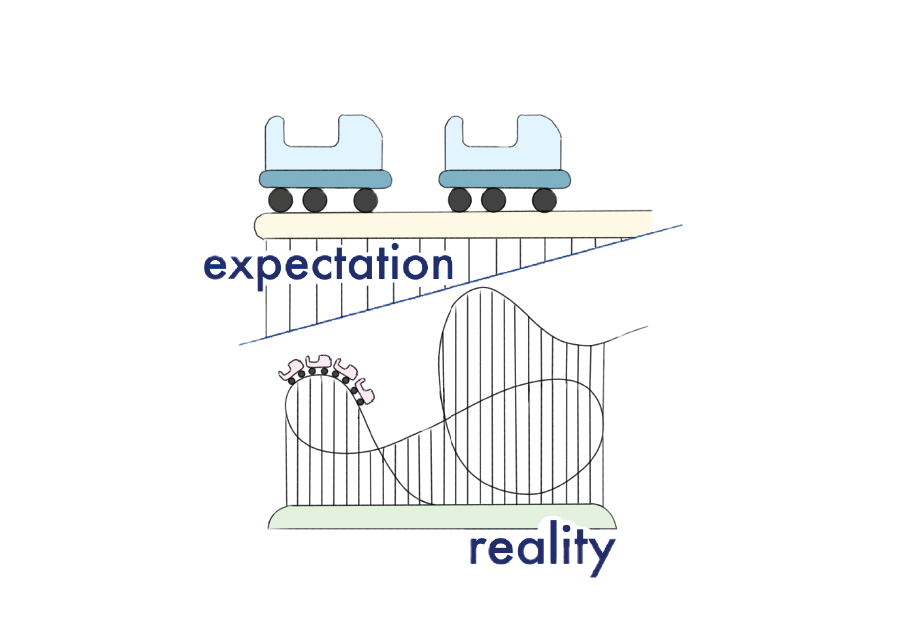With the rise of Big Data—an expansive collection of data from digital platforms representing a source for ongoing discovery and analysis—this innovation has been turning some heads. Whether in your eyes it’s a potent tool, helping improve operations, decisions and customer experiences or just a gross invasion of privacy for digital users and consumers alike, The Fourcast is here to talk about it.
Pro: Necessary Evil
After a rewarding few hours of online-shopping, scouring the web for an elusive pair of shoes or a dress for the next dance, you exit the manifold links. For the next few days, you notice something peculiar. Remember that same dress you scrolled past and clicked on a few times? That one that caught your eye and almost ended up in your online cart? It’s right there, on the sidebar ad of your Quizlet page. Is this a sign from God telling you—in all its pixelated glory—to go back and buy it now? Not exactly. But, for some business entrepreneurs, they wish you thought so.
This phenomenon is referred to as “Big Data,” which roughly means large sets of digital data that can be used to analyze and reveal patterns, trends and associations relating to human behavior and interactions online.
Who exploits this data you may ask? Companies mainly use this information to their overall advantage, through gaining insight into their target market and improving their online performance with its feedback.
A variety of online stores and tech giants, such as Amazon, American Express and Netflix, use this information.
Certain platforms have even garnered your name, address, search history and payment methods, all in hopes to make proper and beneficial business decisions through these algorithms. All of these methods are conducted through advanced software systems, and the fast- er their systems, the more edge these companies gain on the competition.
For some, this may seem a gross invasion of privacy, but although these systems could possibly be used in malicious ways, when you submit your online information into any platform, you sign a kind of online contract. These companies will use what you give them to benefit their product and your experience with it.
The customer is always the priority with Big Data, as these systems bend to the wishes and preferences of those with the cash and the time to spend on these sites. From improving how a company reaches their consumers, to risk management, to matching customer expectations and ensuring that marketing campaigns are effective, Big Data helps more than it harms.
Although highly involved with marketing and business, Big Data has even been utilized by healthcare professionals who have discovered the extremely important and relevant use of these algorithms.
Not only can these systems reduce costs of treatment, predict outbreaks of epidemics, avoid preventable diseases and improve the quality of life in general, Big Data can collect these large amounts of numbers and specific health data of a population faster and less-costly than ever, aiding the advancements in science and medicine around the globe.
So, while some of us will never truly be comfortable with our digital trail following our every online interaction or Netflix giving the absolutely worst movie recommendations (again), Big Data is here to stay, as it should be.
Con: Invasive Innovation
Picture this: the time is 11:37 p.m., the place, your trusty bed. Instead of starting the (final) draft of your English paper that is due tomorrow, or perhaps studying for your history test that will begin in less than nine hours, you find yourself sucked into the never-ending wormhole that is Amazon, browsing for a sorbet machine which will inevitably end up collecting dust on you back shelf. Upon completing this shopping conquest, you open up your Internet browser the next day only to come face-to-face with an advertisement for a different sorbet machine. Why is this happening, you might ask? How does the Internet know your shopping tendencies? The answer is simple: Big Data.
Big Data refers to an extremely large volume of data—too large for traditional analysis machines to process. In today’s society, these large data sets are most commonly used to analyze trends and predict outcomes. Often times, they surface in the form of consumerism, as companies make use of it to attempt to analyze customers preferences and make educated predictions about what they will purchase next. Or in other words, offer suggests about which sorbet machine to buy.
Helpful as this may sound, the use of Big Data raises quite a few concerning points. First and foremost, it is an invasion of privacy. The success of Big Data is contingent on its ability to access your personal information—everything from your Amazon shopping cart to your home address. Personally, I feel uncomfortable knowing that my personal information is being followed like a trail of digital breadcrumbs so that the consumer market can manipulate the content I see.
In fact, there exist certain database marketing companies whose sole purpose is to access customers’ personal information and then sell it to big names like Amazon and Target, who then, in turn, pitch us useless products that ultimately cause us to spend out hard-owned money.
Furthermore, the analyses conducted by Big Data aren’t always correct. We as humans are spontaneous beings. Although we like our routines, it would be a stretch to say that we follow a certain procedure each time we do something. This is where Big Data lacks the adequate tools to succeed: it does not take into account the standard deviation—those moments when we break routine. And this can be dangerous.
In 2013, a Google-based service known as Google Flu Trends strived to forecast flu outbreaks in 25 different countries by using Big Data to analyze people’s search history. This project ultimately failed, as predictions were off by a grand total of 140 percent. Why? Because these machines didn’t have the ability to distinguish between searches like “cold symptoms” and “flu symptoms.” Therefore, they included any sort of search pertaining to an illness in their analysis, causing the results to be skewed.
On a much smaller scale, Big Data has a tendency to make mistakes on the consumer side of business as well. Take the sorbet maker for instance. Although I may have simply been browsing these machines merely for entertainment, knowing in my heart that I would never make such a purchase, Big Data doesn’t know this. So, for the next few weeks, I will continue to be bombarded with ads of a useless product that I never intended to buy. And although this may seem like an insignificant consequence, it is one that could be entirely avoided if it hadn’t been for Big Data mining and manipulating consumers’ data in the first place.
Ultimately, this raises the question as to where we draw the line. As humans, we have basic civil liberties that we should be afforded, and Big Data has proven time and time again that it is willing to overstep these boundaries to maximize its success. So when it comes to my privacy and protection, I am willing to stand firm in my beliefs: Big Data does more harm than it does good.
CON: Charlotte Dross, Editor-in-Chief/ PRO: Paige Halverson Managing Editor
Photo by Paige Halverson










